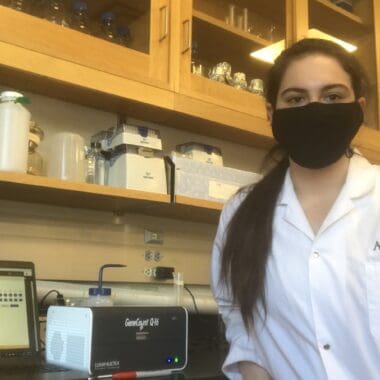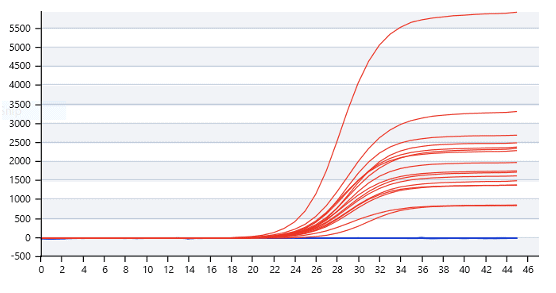
Environmental monitoring during the COVID-19 pandemic can be used as a tool to identify locations of asymptomatic or pre-symptomatic carriers, focus clinical testing, and confirm cleaning protocols. LuminUltra developed a surface testing method for the SARS-CoV-2 virus that allows for swabs of high-touch surfaces to be rapidly analyzed for presence of the virus. Researchers at Acadia University adopted this method and developed an environmental monitoring program for the campus as it welcomed students back to classes. Undergraduate engineering student Claire Spearns, pictured left, is working on this important project under the direction of Dr. Jennie Rand.
Methods
Since self-isolating students returned to campus in September 2020, weekly samples of high-touch surfaces have been collected around campus. Surfaces include entrance door handles and elevator buttons of residences, COVID-19 testing centers, meal hall and other high traffic areas. Samples are immediately preserved, stored on ice and transported to the lab in the K.C. Irving Environmental Science Centre for analysis.

Viral sample RNA is captured in a resin and washed to remove impurities. Purified RNA is then mixed with reagents and analyzed with a LuminUltra GeneCountqPCR. RNA is “reverse-transcribed” into DNA, then small pieces of DNA are used to amplify sections of viral sequence producing a fluorescent signal monitored by the device. Quantitative results are then reported based on the cycle threshold value.
Results
To date, over 340 samples have been collected with a few indeterminate results. In those instances, additional samples are collected from the same location and analyzed with a duplicate of the original sample. In all cases, the subsequent results have been non-detect. All indeterminate results are shared with Luminultra to help with method optimization.


 Acadia University
Acadia University